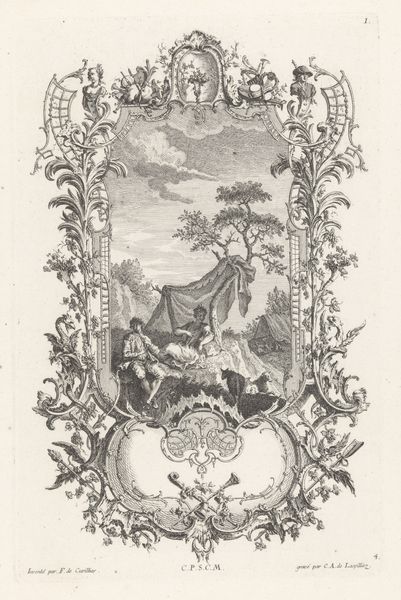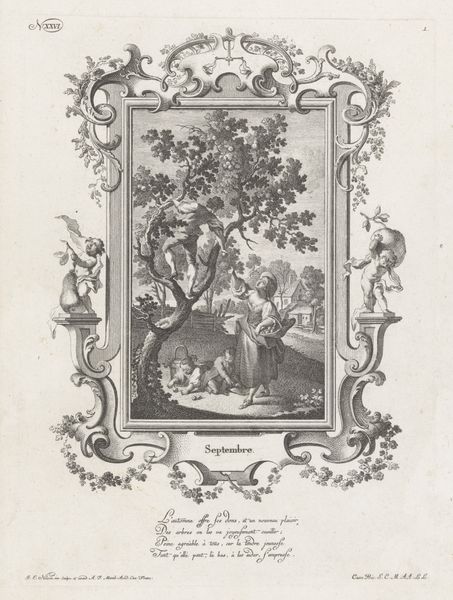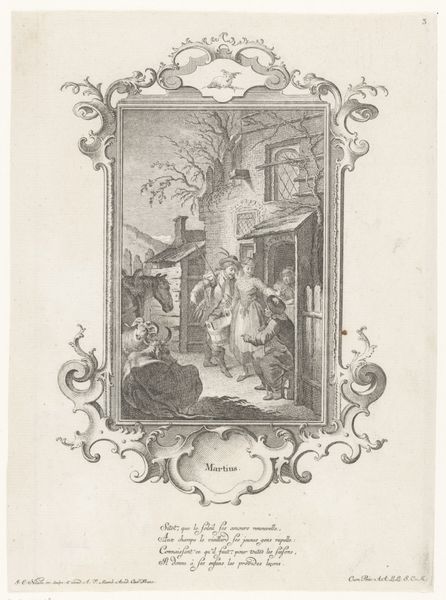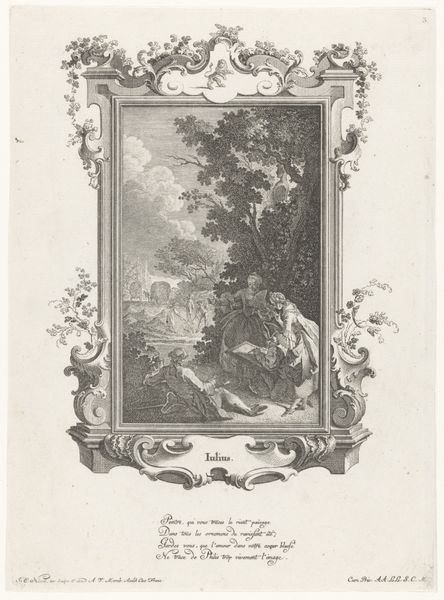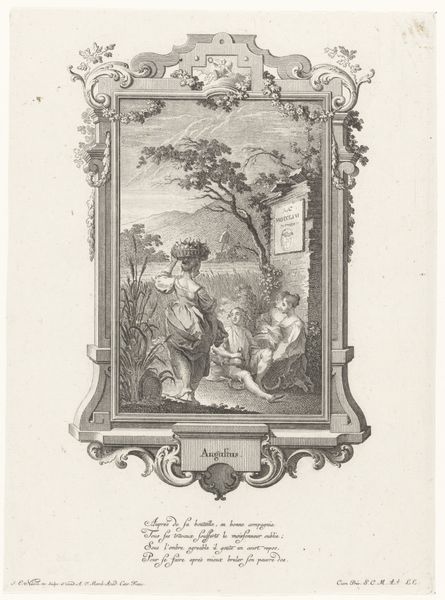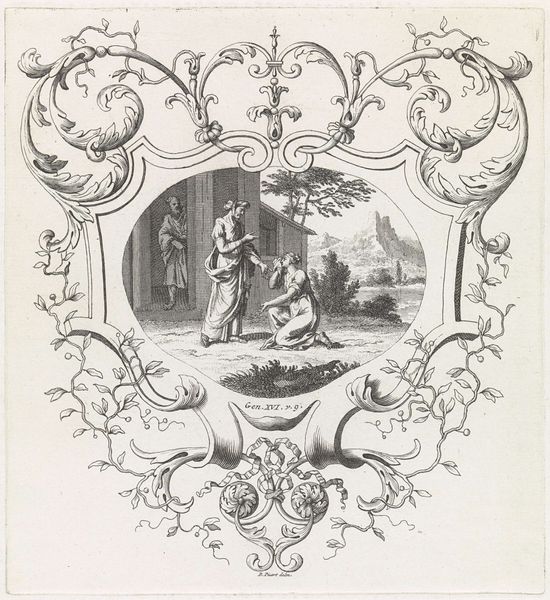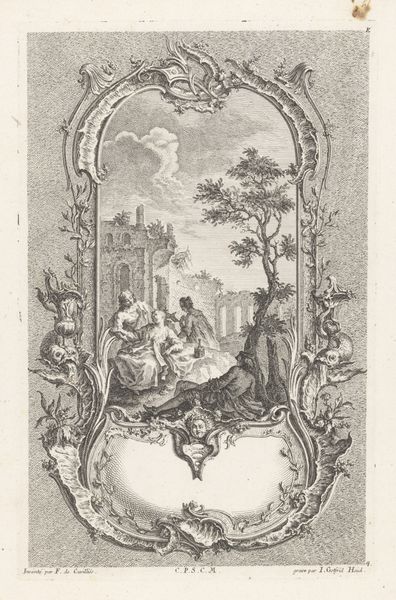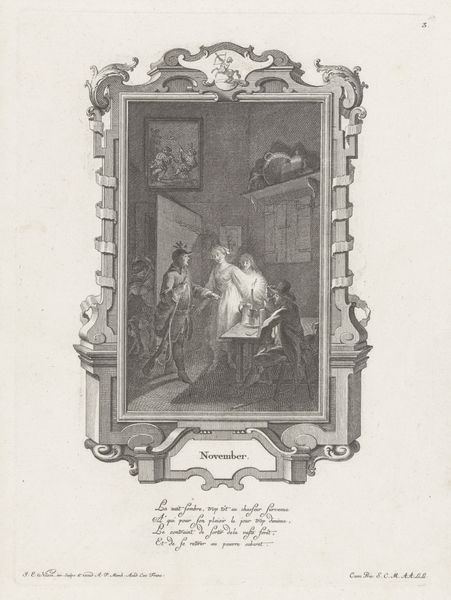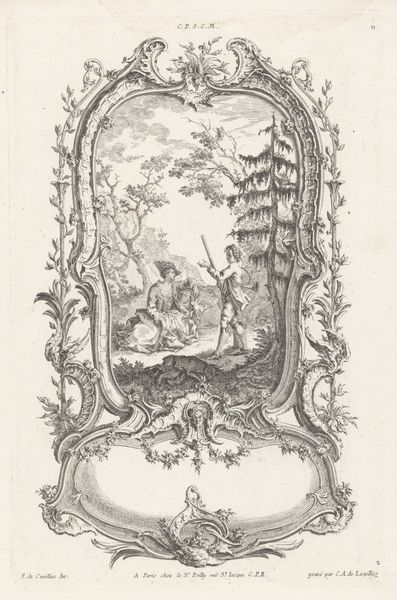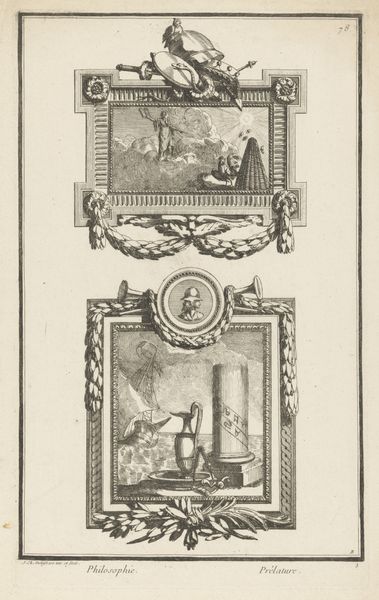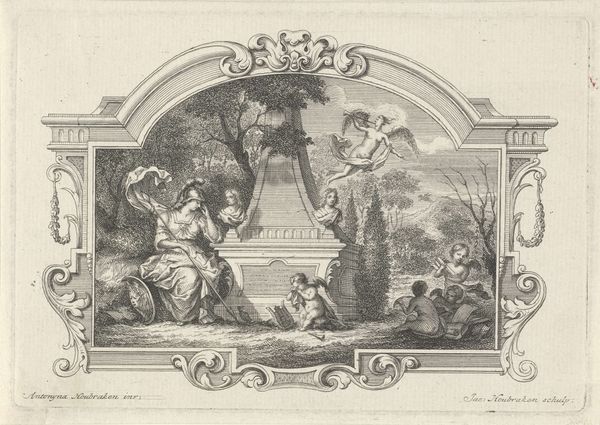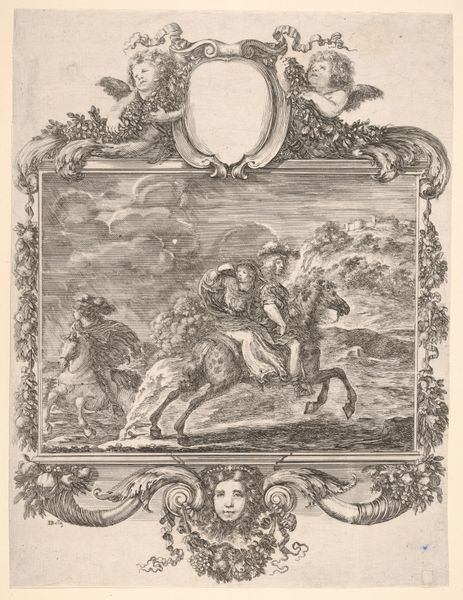
Dimensions: height 264 mm, width 192 mm
Copyright: Rijks Museum: Open Domain
Curator: Looking at "Mei" by Johann Esaias Nilson from 1766 here at the Rijksmuseum, the first thing that strikes me is the intricate ornamentation surrounding the central image, almost overwhelming the scene it frames. Editor: I agree. The scene is pleasant enough—a domestic tableau of a family perhaps? But my eye is really drawn to the processes used to create this print. I mean look at the fineness of the lines in the engraving; there’s a remarkable attention to detail. And those curlicues! The labor involved is immense. Curator: Indeed. Contextually, engravings like these in the Baroque style had significant public value. Prints democratized art, making imagery more accessible than painting to a wider audience. This work, "Mei," even includes text in the lower register and suggests a link with printmaking traditions as educational tools. Editor: So, it’s more than just decorative. But think about what's being decorated – a family unit! An embrace, a protected space! Nilson created this intricate and quite lovely ornamental frame using labor in itself – from sourcing materials to distribution – and that affects how we perceive domestic comfort as well. Curator: That resonates. Museums and other cultural institutions have profoundly influenced what we consider artistic value and the way prints like "Mei" circulate, which further reinforces particular values. And this artwork’s placement in the Rijksmuseum—how does this change our perception? Editor: It raises questions about access to leisure and material possessions, doesn’t it? How are we shaping narratives with these artworks for our audience to consume today, more than two centuries after Nilson put ink to paper? We can examine it’s cultural circulation: What materials did Nilson use, and how widely available would those tools have been? It wasn’t photography of the era, and his products suggest a high demand in visual art and design as well. Curator: Precisely. Reflecting on "Mei," I'm struck by the dialogue it establishes between private life and the public realm through imagery, medium, labor, and context. Editor: For me, it emphasizes how artworks operate both within and beyond institutional contexts, continuing to offer layers of rich complexity for understanding the means through which art becomes socially engaged through labor.
Comments
No comments
Be the first to comment and join the conversation on the ultimate creative platform.
